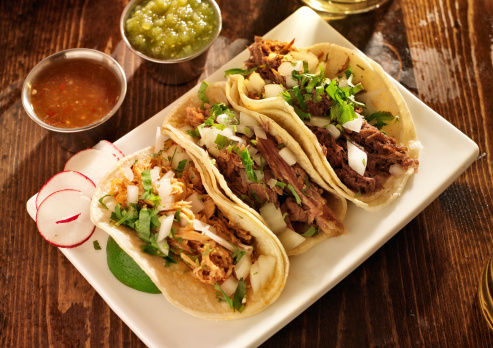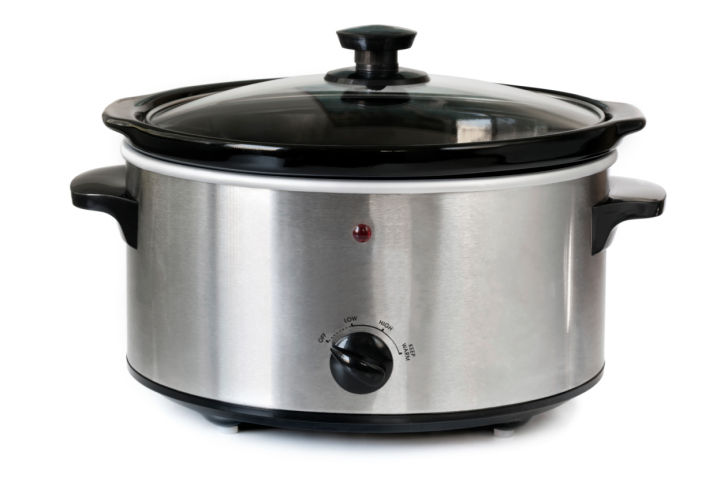New Year’s Day is a time for hope and reflection for many, but did you know it was also a popular food tradition? Special breads, cakes, noodles, field peas, herring, and pigs are some traditional New Year’s foods meant to usher in a prosperous new year. From Spain to Scandinavia, these foods represent good luck, longevity, abundance, prosperity, and coins or wealth. As the new year arrives around the globe, special cakes and bread are a tradition, as well as noodles representing long life, field peas representing coins, herrings representing abundance, and pigs representing good luck. Foods That Bring Good Luck for New Years. The general theme is the same regardless of the traditions: Share food and drink with family and friends to usher in a year of prosperity.
We can help you plan your New Years Lucky Foods Shopping List and New Year Lucky Things to Do – New Year’s Eve Traditions
Following are some New Year’s food traditions:
Hoppin’ John (American South)
In the American South, the dish called “Hoppin’ John” contains black-eyed peas (representing coins), rice, collard greens (symbolizing cash), and cornbread (the color of gold). Eating this dish on New Year’s Day supposedly brings economic luck in the coming year. Black Eyed Peas & Lentil Recipes
What is Hoppin’ John exactly? Hoppin’ John is a pork-flavored stew made with field or black-eyed peas, rice, onion, bacon, and seasonings. Some recipes also include ham hocks or sausage. The peas and rice swell as they cook, making quite a hearty casserole-type dish. Pork-flavored field peas or black-eyed peas (symbolizing coins) and rice, served with collards or other cooked greens (the color of money) and cornbread (the color of gold), are said to bring good luck in the new year. New Years Lucky Colors 2024
Twelve Grapes (Spain and Latin America)
In Spain and many Latin American countries, a tradition involves eating twelve grapes at the stroke of midnight – one grape for each chime of the clock bell in the New Year. Most major city squares in Spain have clock towers – the most famous being Puerta del Sol in Madrid – where revelers gather to participate in the grape-eating countdown. This tradition is also popular in Cuba and South American countries as well. Lucky Fruits for New Years,
Where did the twelve grapes tradition originate? While the exact origin is unknown, the most likely source is early 20th century Alicante, Spain, when grape growers came up with the idea to help sell off extra grapes at New Year’s.
Tamales (Mexico)
Mexicans eat tamales on New Year’s for several reasons. First, making the tamales takes time and teamwork, which brings family and friends together. Also, different symbolic foods go inside each tamale, like coins, pepper, and salt, which are meant to predict the new year’s blessings. It is Corn dough stuffed with meat, cheese, and other additions and wrapped in a banana leaf or corn husk. Cuban Tamales Recipes
How do you make tamales? Tamales consist of masa (corn dough) stuffed with savory or sweet fillings and wrapped in either corn husks or banana leaves. It takes a tamalada – a tamale-making party where groups of women each are in charge of one aspect of preparation.
Legumes (Brazil & Portugal)
In Brazil and Portugal, the tradition is to eat lentils, chickpeas, or fava beans on New Year’s Eve, also due to their round coin-like shape, which brings wealth and luck. Brazilians eat lentil soup, and snacking on roasted green chickpeas is popular in Portugal.
Oliebollen (Netherlands)
The Dutch eat oliebollen, or oil balls, on New Year’s Eve. They are doughnut-like dumplings, deep fried and then dusted with powdered sugar. Sales of oliebollen soar between Christmas and New Year’s Eve – they make great on-the-go snacks while partying!
Where does the name oliebollen come from? Oliebollen means “oil balls” – olie means oil, and bollen means balls. They are fritters containing dried fruit like raisins or apples, fried in oil.
Marzipan Pigs (Austria and Germany)
New Year’s Eve Sylvesterabend, or the event of Saint Sylvester. In Austria, revelers drink a red wine punch with cinnamon and spices, eat a suckling pig for dinner, and decorate the table with little pigs made of marzipan (Marzipanschwein or Glucksschwein). Good luck pigs are also common gifts throughout both countries. In Austria and Germany, marzipan pigs and lucky pigs made from chocolate or decoration bring good fortune. Other New Year’s Eve food traditions include:
- Red wine punch with spices like cinnamon
- Roast suckling pig dinner
- Chiacchiere – balls of fried dough dipped in honey and powdered sugar
Soba Noodles (Japan)
Families eat buckwheat soba noodles or toshikoshi soba at midnight on New Year’s Eve to bid farewell to the year gone by and welcome the year to come. The Japanese slurp buckwheat soba noodles called toshikoshi soba. The long noodles symbolize prosperity and longevity in the coming year.
What are mochitsuki parties? Friends and families in Japan also celebrate a custom called mochitsuki in the days before New Year’s Eve. They spend time together pounding mochi rice into soft, sweet, glutinous cakes, which they form into round balls and eat for dessert. The sweet rice is soaked, steamed, and pounded into a smooth mass. The guests take turns pinching off pieces to make into small buns eaten for dessert.
King Cakes (Greece, France, Mexico)
A New Year’s cake of many cultures. King cakes and related cakes appear in Greece (vasilopita), France (galette des rois), Mexico (Rosca de Reyes), Bulgarians (banitsa), and more. Most king cakes contain a hidden figurine or coin meant to bring luck to whoever finds it in their slice. Most cakes are eaten at midnight on New Year’s Eve, though some cultures cut the cake on Christmas or the Epiphany, January 6. While king cakes are more common at Epiphany in some cultures, they also tie into New Year’s celebrations. Foods That Bring Good Luck for New Years
Cotechino con Lenticchie (Italy)
The Italian New Year’s meal highlights a few lucky foods, including cotechino con lenticchie. Cotechino is a savory pork sausage served alongside lentils, representing prosperity and money due to its coin-like shape. Italians celebrate La Festa di San Silvestro with a traditional cotechino con lenticchie and zampone, a stuffed pig’s trotter. The meal ends with chiacchiere, balls of fried dough rolled in honey and powdered sugar.
Lentil Soup (Italy)
Similar to their sausage and lentil dish, Italians often eat lentil soup called zuppa di lenticchie at midnight on New Year’s Eve. The lentils represent prosperity for the coming year. Sometimes, a small gift like a coin is buried at the bottom of the bowl to be discovered while eating.
Pickled Herring (Poland and Scandinavia)
Because herring has silver skin, it symbolizes prosperity for the coming year in Poland and Scandinavia. They are eaten at the stroke of midnight to bring a year of prosperity and bounty due to the silver coloring. Pickled herring fillets are served around midnight on New Year’s Eve or included in a smoked fish starter buffet. Some eat pickled herring in cream sauce, while others eat it with onions. A special Polish preparation is called Sledzie Marynowane, made by soaking whole salt herrings in water for 24 hours and then layering them in a jar with onions, allspice, sugar, and white vinegar. Scandinavians include herring in a large midnight smorgasbord with smoked pickled fish, pate, and meatballs.
Kransekage Tower Cakes (Denmark and Norway)
Kransekage wreath cake towers are made from marzipan rings stacked on top of each other to form tall layer cakes decorated with ornaments. Danes may find an almond hidden inside their slice, while Norwegians include a bottle of wine or Aquavit liquor in the center. Kransekage means wreath cake.
12 Round Fruits (Philippines)
In the Philippines, the tradition is to have twelve round fruits sitting atop the dining table on New Year’s Eve to symbolize prosperity for each month. Popular fruits include oranges, apples, grapes, melons, and tomatoes!
Vasilopita Cake (Greece)
This Greek New Year’s cake contains a hidden coin or trinket that gives good fortune and blessings to whoever finds it in their slice. Saint Basil is said to have distributed coins in cake to people experiencing poverty on New Year’s Eve.
Pomegranates (Greece)
Another Greek New Year’s Eve custom involves breaking open a pomegranate at midnight and scattering the seeds around the house for prosperity and fertility all year. Pomegranates symbolize longevity.
As you can see, New Year’s food traditions vary from culture to culture but circle around similar symbolic themes. Foods That Bring Good Luck for the New Year. The underlying spirit remains the same no matter how you welcome the new year – spending quality time and sharing comfort foods with loved ones! New Year’s Lucky Foods
What NOT To Eat On New Year’s Day
New Years Traditions For Good Luck
New Years Hang Over Cures from Around the World
New Year’s Good Luck Traditions Around the World









